70 Years Ago: F-86s and MiGs over Korea
On December 17, 1950, the first known aerial combat between swept-wing jet fighters took place in the skies over Korea. The Russian-built Mikoyan-Gurevich MiG-15 had been recently introduced and its speed and maneuverability caused trouble for the United States and in response, the North American F-86 Sabre was rushed to Korea. Ward Hitt, Jr., a member of the 4th Fighter Interceptor Group, chronicled the early days of the F-86 in combat in a detailed scrapbook.
:focal(500x375:501x376)/https://tf-cmsv2-smithsonianmag-media.s3.amazonaws.com/blogging/featured/NASM-9A09971.jpg)
On December 17, 1950, the first known aerial combat between swept-wing jet fighters took place in the skies over Korea. The Russian-built Mikoyan-Gurevich MiG-15 had been introduced to the Korean conflict in November, its speed and maneuverability causing trouble for the United States’ fleet of B-29 bombers and escorts. The North American F-86 Sabre was rushed to Korea, setting the stage for a clash in the air. Ward Hitt Jr., a member of the 4th Fighter Interceptor Group based at Kimpo Air Base near Seoul, chronicled the early days of the F-86 in combat in a detailed scrapbook, part of the National Air and Space Museum Archives’ digital collections.
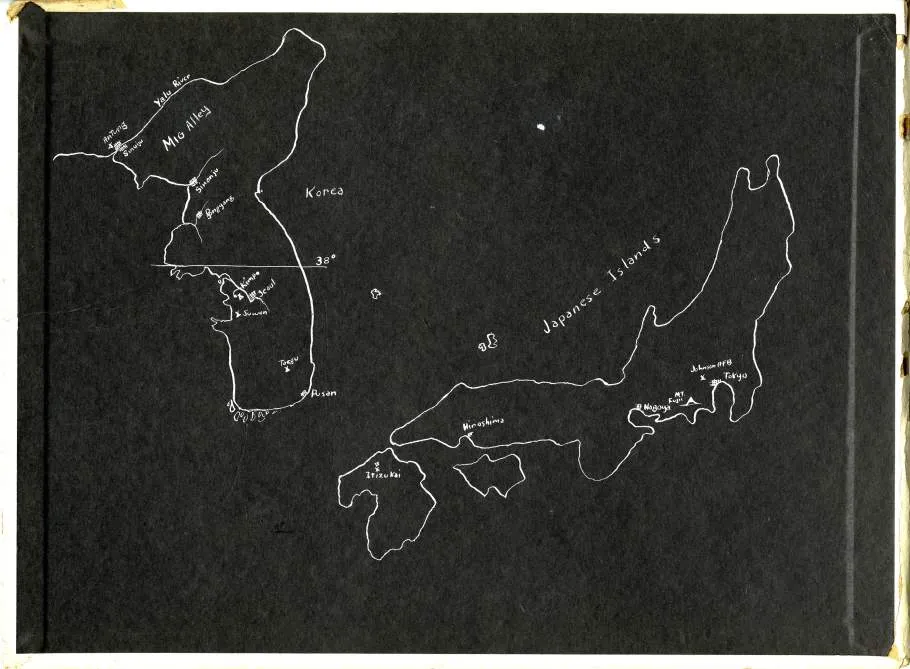
A native of Kansas City, Kansas, Hitt entered Air Force cadet training in 1948 and graduated from Williams Field in February 1949. He received his promotion to first lieutenant after he completed his radar training later in October 1949. In November 1950, he was sent to Johnson AFB in Japan. He joined the 4th Fighter Interceptor Group at Kimpo on December 8, 1950, reflecting in a letter home: “Our planes won’t be here for a week and I’m afraid Seoul won’t last that long.”
As they waited for their aircraft, Hitt was excited by General Douglas MacArthur’s December 11 visit to Kimpo, very aware of the situation. “General MacArthur came in here yesterday, walked right past me not more than 15 feet away. I took a picture of him, hope it comes out ok. The Reds are twenty miles away and things are really tight here.”
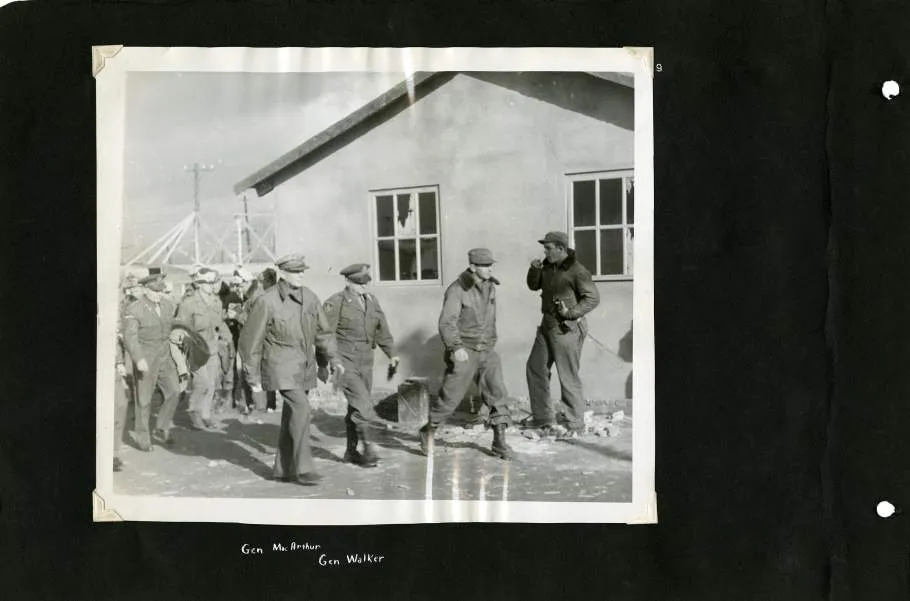
The F-86As arrived at Kimpo on December 15. Hitt wrote, “The situation here remains the same, tight and jumpy. Our planes arrived today so I guess I’ll be in business tomorrow. Don’t worry about me, we are flying top cover here and no one is getting shot down in jets here anyway. The Reds are 12 miles away.”
Hitt was scheduled to be part of the F-86's first mission over North Korea. He wrote home on December 17 as if he was, “We started flying today. I was on the first mission. We didn’t see anything on our flight but the one this afternoon did.” But a photo caption released by the Far East Air Forces told a different story:
A little bit of Lt. Ward Hitt's combat heart broke off recently at an air base in Korea. He drew an assignment of making the first U.S. Air Forces F-86 Sabre jet mission over frozen North Korea.
The airplane he was to fly developed trouble just prior to takeoff. Hitt, of 2834 Parkwood Boulevard, Kansas City, Kan., ran to another plane to take off. He got off the ground late, however, and was ordered to return to base by the flight leader.
"There will be other chances, " Hitt said later, "but never the first chance again."
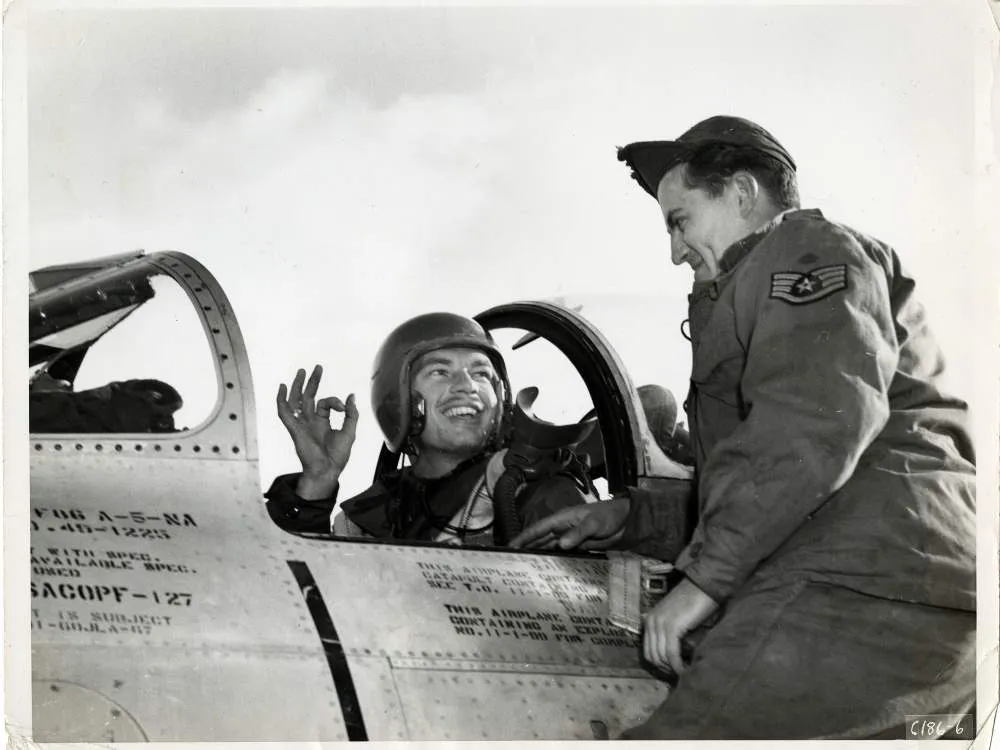
Hitt’s letter home continues with the biggest news of December 17: “Colonel Hinton shot down a swept wing MIG! Can’t tell you much about it but it will probably be in the news.”
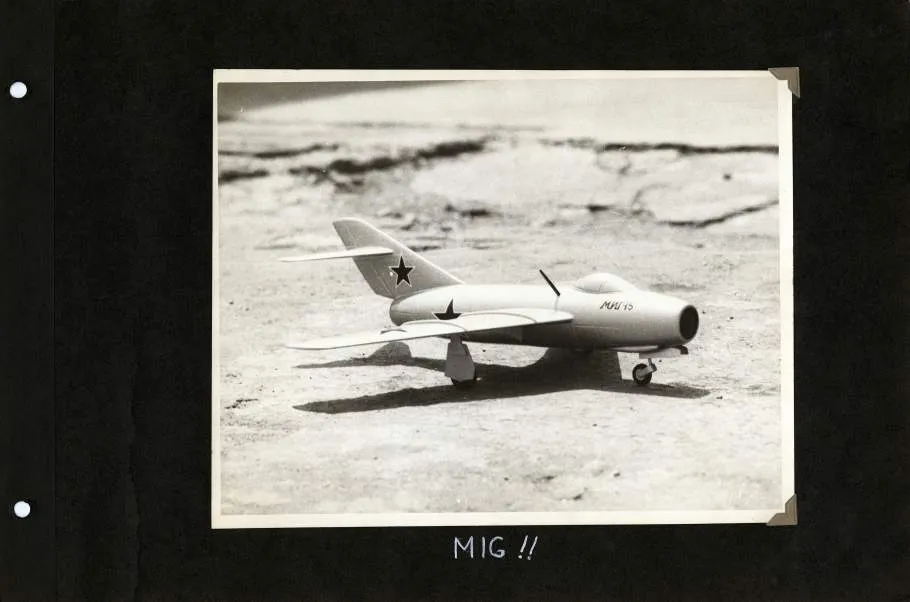
Hitt’s scrapbook contains several newspaper clippings in which Col. Bruce Hinton, commander of the 336th Fighter Interceptor Squadron, described his group’s success in the air about 10 miles southeast of Sinuiju. They tricked the MiGs into combat by flying at a “very low speed in an area where the MIGS usually play possum while waiting for slower American planes.” After waiting in the area for a few minutes, “They were below us and we headed into the attack.” He continued, “I closed in gradually and when I figured I was within range I let go a short burst. I could see the bullets flying. I continued to maneuver and fired a long burst and he started to smoke and burn very badly…. I closed in to within 600 to 800 feet and first another burst and then I pulled off. As I looked back I could see him spinning down, trailing smoke and fire.”
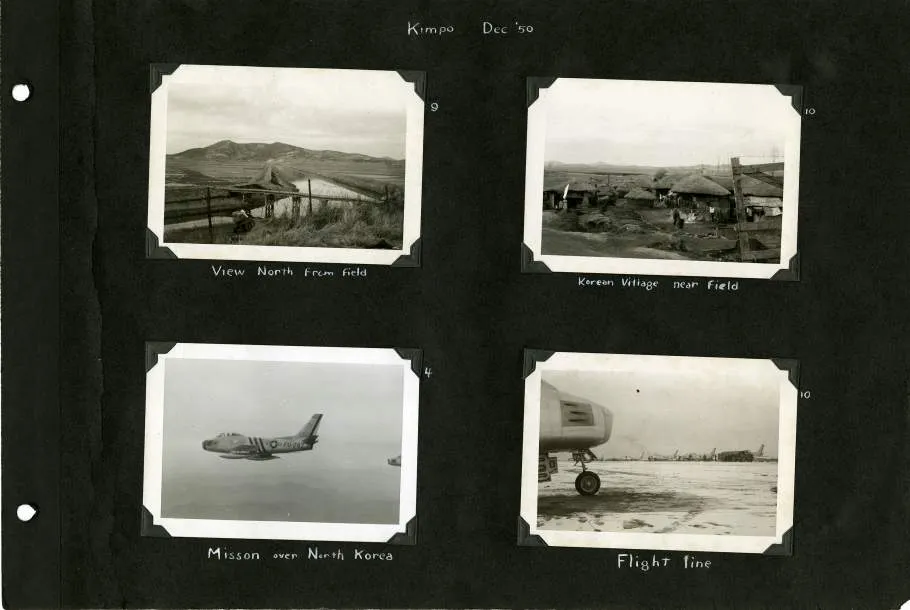
Hitt would get his own chances in aerial combat later. The citation for the Air Medal he received in April 1951 read: “He performed an act of meritorious achievement as a member of a flight of four F-86 type aircraft on a combat aerial patrol south of the Sinuiju-Yalu river area, north Korea. In the face of superior numbers of high performance enemy jet aircraft, Lieutenant Hitt’s flight made repeated attacks upon the enemy.”
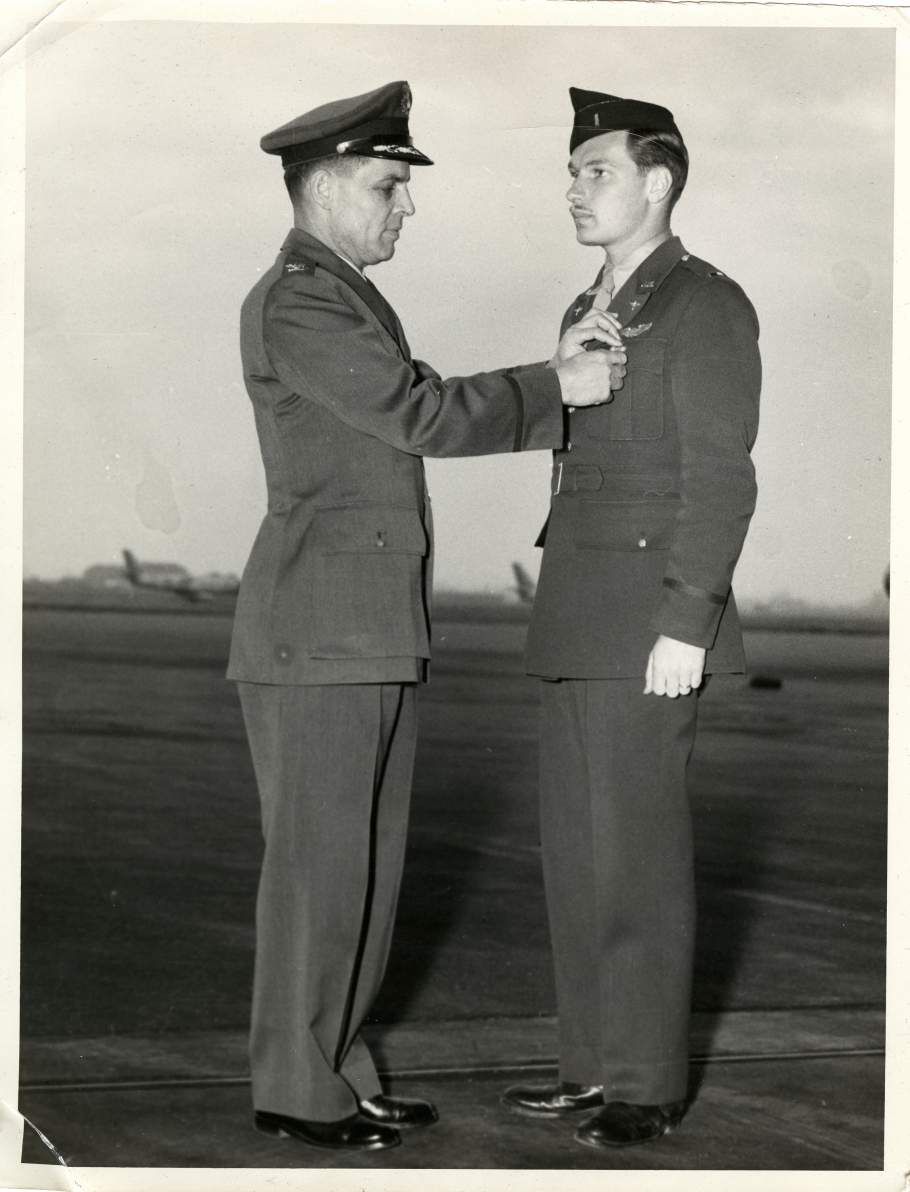
Hitt was then ordered to Forward Aircraft Controller Duty in January, for which he was awarded the Oak Leaf Cluster to the Air Medal in April as well. He was assigned to the 5th Republic of Korea (ROK) Corps, 36 Regiment February 3 through 26, 1951 in central Korea. Hitt returned to Japan in June 1951 to attend the Combat Orientation School at Johnson AFB until September 1951.
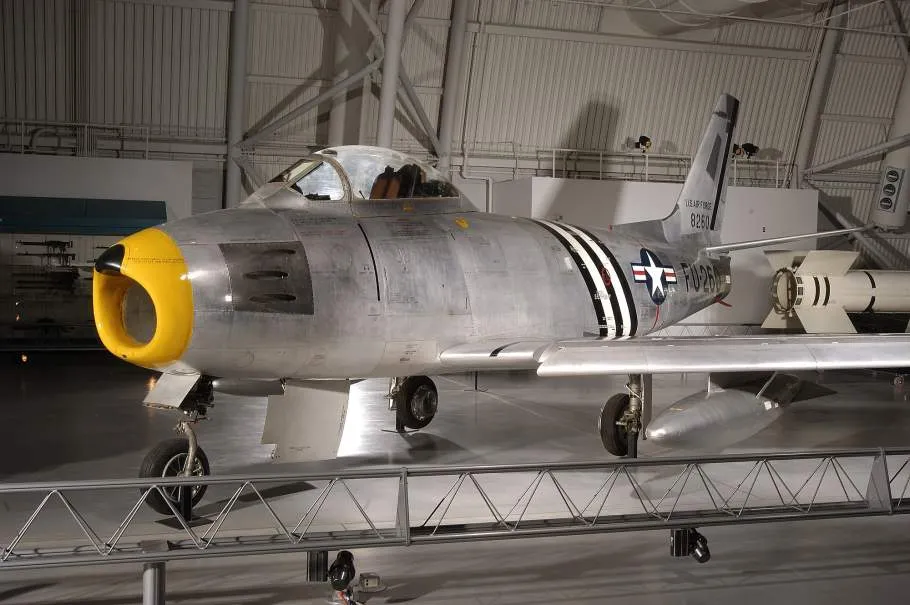
By the end of the Korean War, the US awarded almost 800 aerial victory credits to Sabre pilots, while losing less than eighty F-86s, although Soviet and Chinese records challenge these numbers. The North American F-86A Sabre on display at the Steven F. Udvar-Hazy Center is one of the aircraft that was assigned to the 4th Fighter Interceptor Group at Kimpo in December 1950 (along with Ward Hitt). The history of the Museum’s Chinese Mikoyan-Gurevich MiG-15 is unknown.
